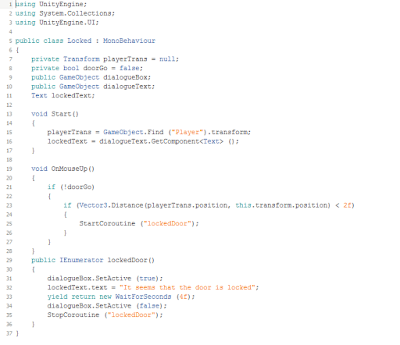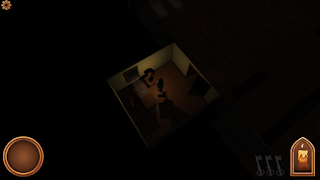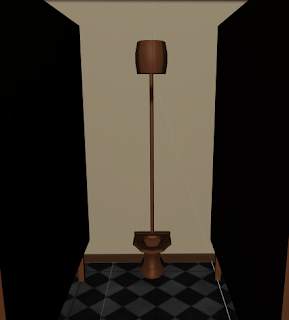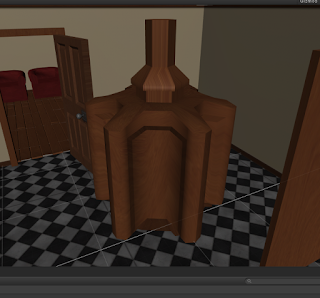This post will explain the mechanics and flow of the level. Its has still not been finalised, so not all the keys/note/etc. are present. After the player has chosen to start the game through the main menu, they will be shown a short cut-scene of the level.
As our team no longer has a concept artist, we don't have a proper cut scene with 2D assets, so we've decided on a simple fly-through of our level, this will give the player a direction of where to go.
This is the entrance hall. The player character will begin in this location and progress through the facing doorway into the atrium. The lighting around the character is still the spotlight from the cut-scene.
After giving control to player, a dialogue box appears. Our character explains that he must make it to the stage in time for his performance. This is the lighting the player will continue through the level with, the light travels further in the direction the character is aiming.
This is the managers office. The first note the player finds will be located here, on the desk. The note will in fact be visible from a distance due to a beam of moonlight through the window. These moonlight effects are visible elsewhere in the level also.
Here is a view from the alternate camera mode, using the up and down arrow keys the angle can be changed.
These are the notes the player will find scattered around the level. They will detail a short letter concerning the whereabouts of a key or object of significance.
This image is the location of a key in the environment, the player can in fact search for the keys without the need for reading the notes. But unlike the notes, the keys are very obscured, and the player must use their light to locate them effectively.
This depicts the nav-mesh for the level.
















































